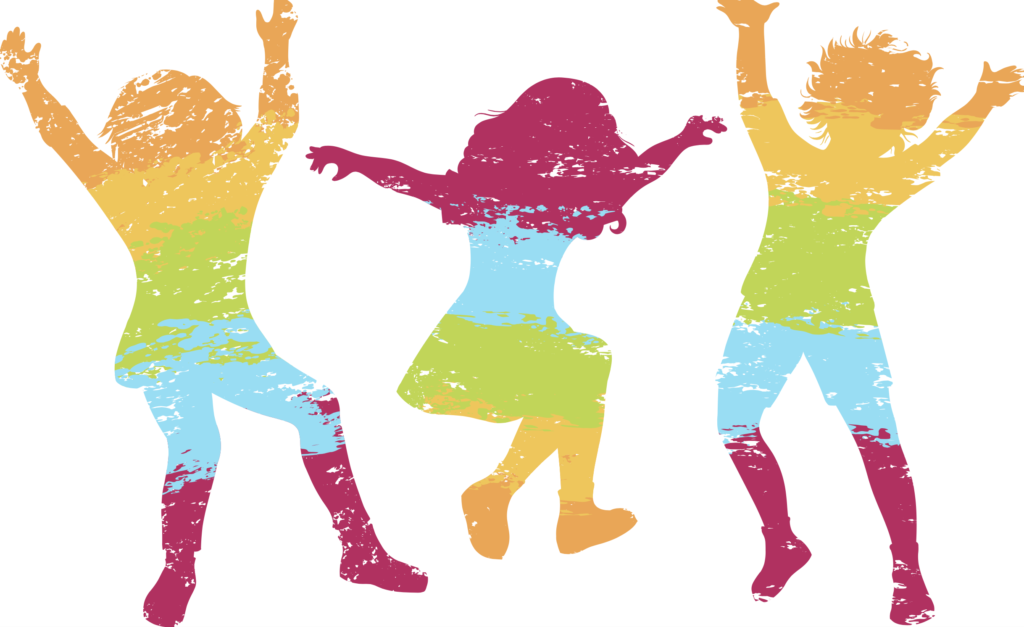
Are your students tired of writing analytical essays? I’m shaking up how students respond to informational texts. I’m experimenting with letters to real people that still nudge students to think about the big ideas in sources. With small groups of 4th and 5th grade students, I explored what writing letters might look like. Here’s the three phase lesson in brief.
Phase One – Meet the Sources
The students read two sources about local officials – one was a traditional “what do public officials do” type of text and the second was an article on how local officials in Flint, Michigan responded to the water crisis (a current event at the time of this lesson). Before reading, the teacher introduced the vocabulary “accomplish”; she also gave the students a clear purpose for reading stated as the question like “What do public officials do to help citizens? What do they try to accomplish?”
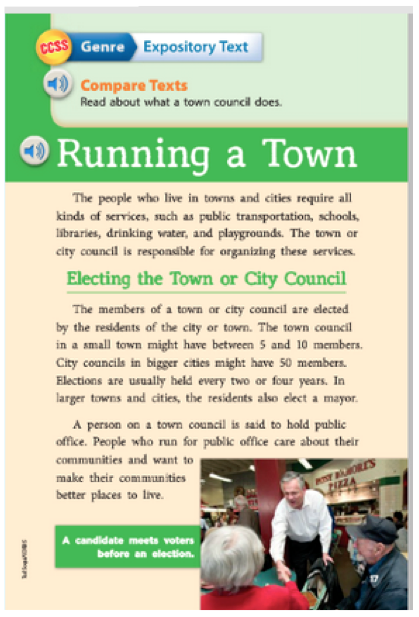
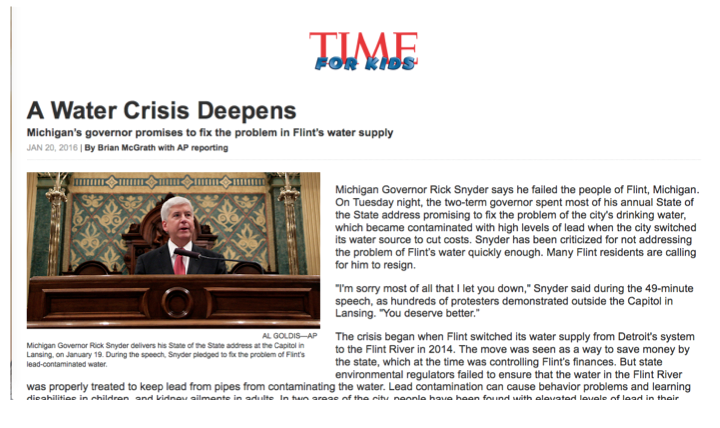
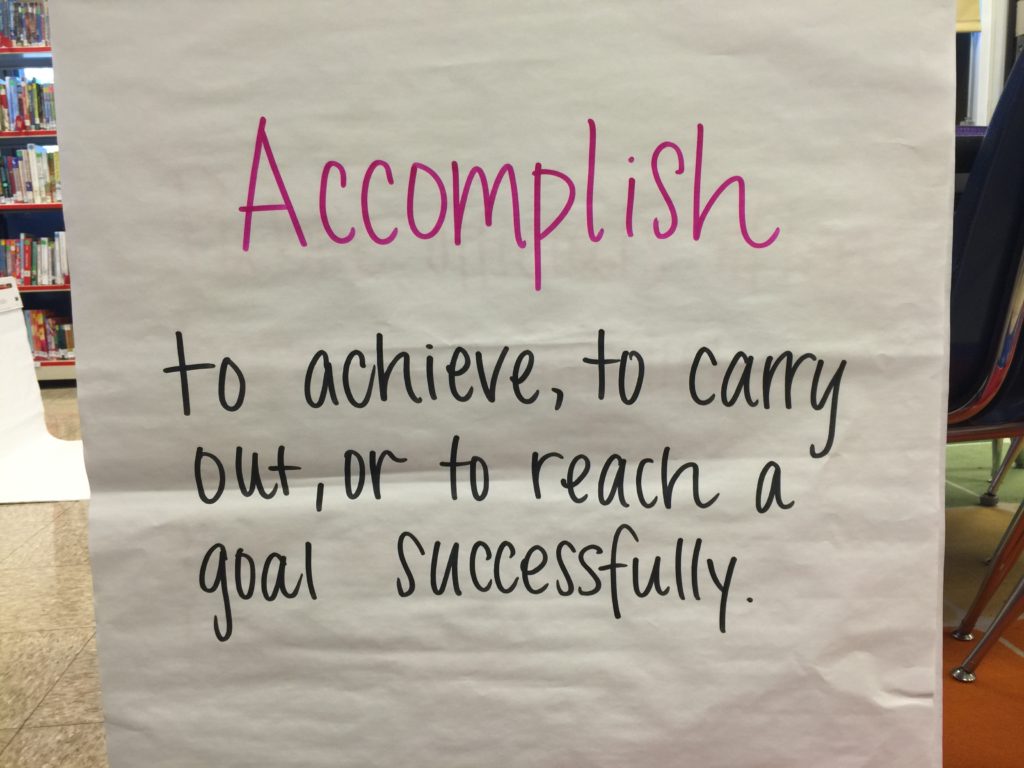
Phase Two – Meet the Strategy
With the support of their teacher, the students reread both short sources and took two-column notes. See one example below.
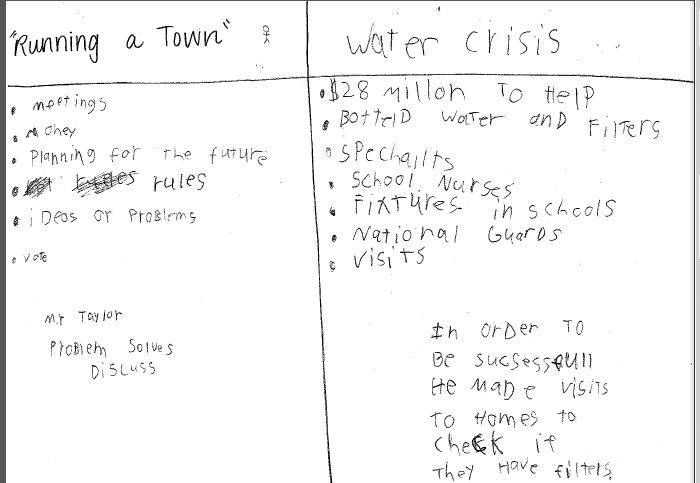
Phase Three – Meet the Response
Time to talk and really think about learning
Frequently it’s hard for students to use their close reading notes to move into writing. Sometimes they need more time to talk and make sense of the content. Sometimes they also need to create a plan for their written response – or in this case, a letter to someone they know encouraging them to run for public office!
When I met with the students (after their teacher taught the phase 1-2 lessons), I asked them to review their notes and turn and talk with a partner about what they’d learned about how public officials accomplish tasks. As I observed, I noticed they needed more support in talking in depth about this topic. Many were just listing what they learned by reading off their notes. So I pulled the group back together and we had a “conversation” –this means no one raises their hands. We just talked about what they learned and as needed I prompt students to ask each other for clarification, to ask for more details from a peer, or to build on what a peer said. As they did this, I took notes (based on what they were saying or my interpretation of their comments) on a small dry erase board – for the students to refer to as they talked. See image below. These notes became helpful when we moved to write.
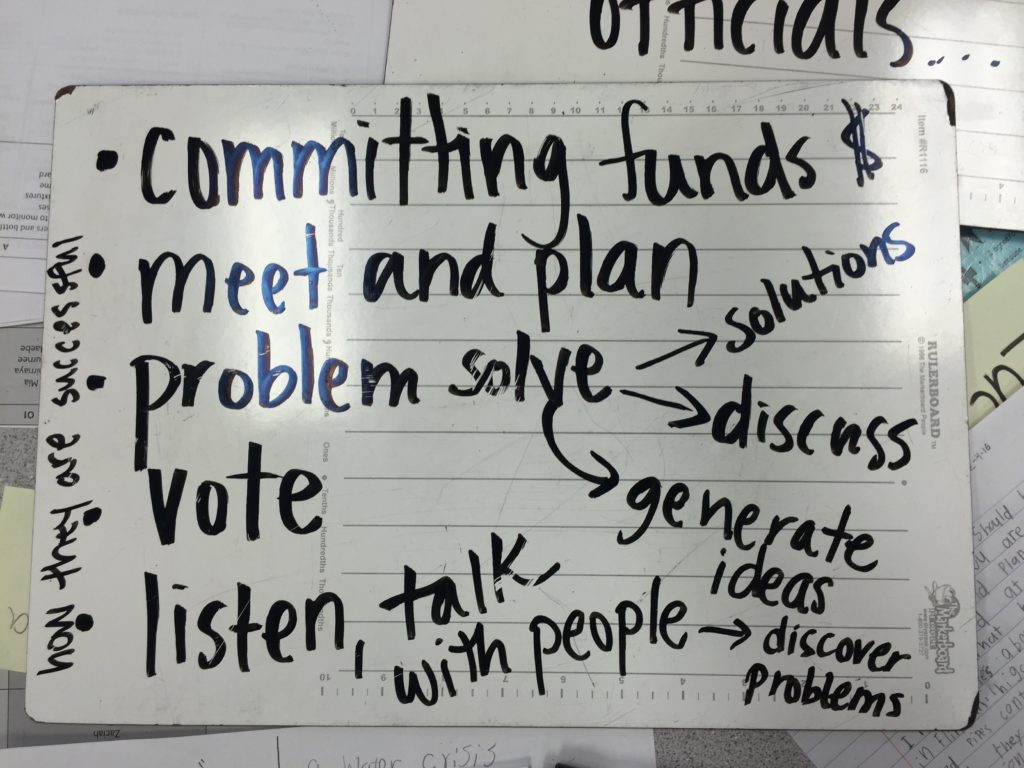
Share the prompt and develop criteria
For the 4th grade lesson with texts on public officials, the students had to write a letter to someone they think should run for public office and explain why – with reference to the texts they’d read. Before writing, they developed criteria with me. (See image below.)
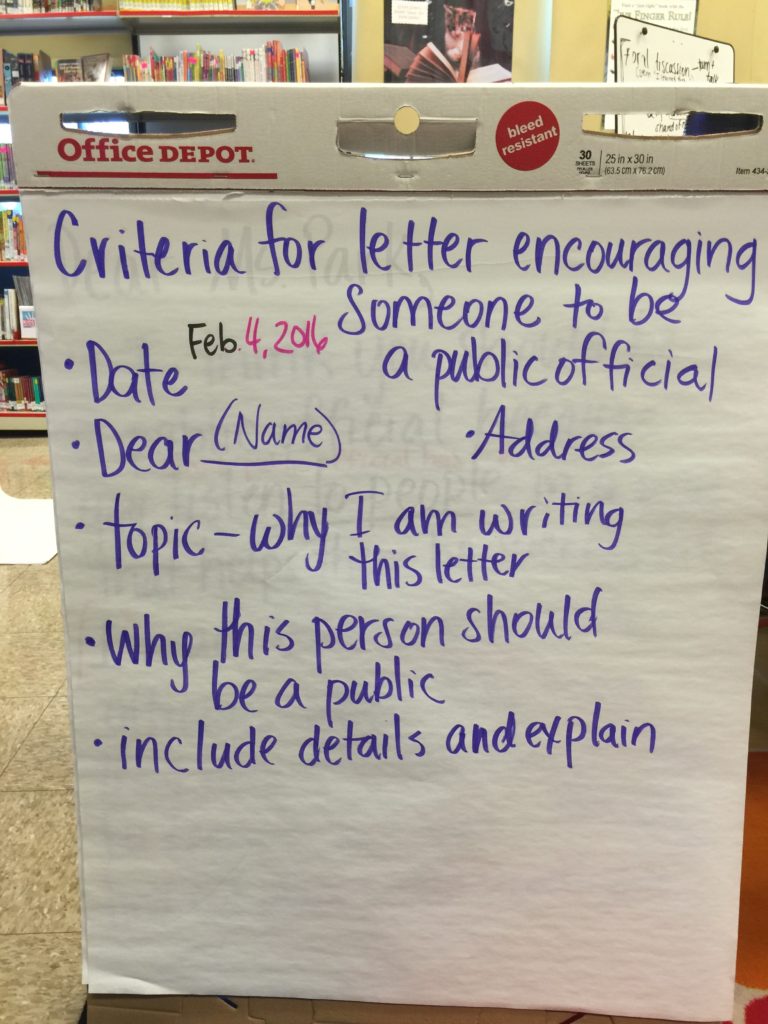
Alternate shared and independent writing
We picked a person, Ms. Park, a teacher in their school, to write a letter to during shared writing and then they picked their own person. Together we wrote and introduction for the letter to Ms. Park and then each student wrote an intro for their own letter. We wrote about text evidence for our shared person and then each student wrote about different evidence for their own letter. Each time they worked on their own letters, I leaned in to confer. The images below is of our shared writing.
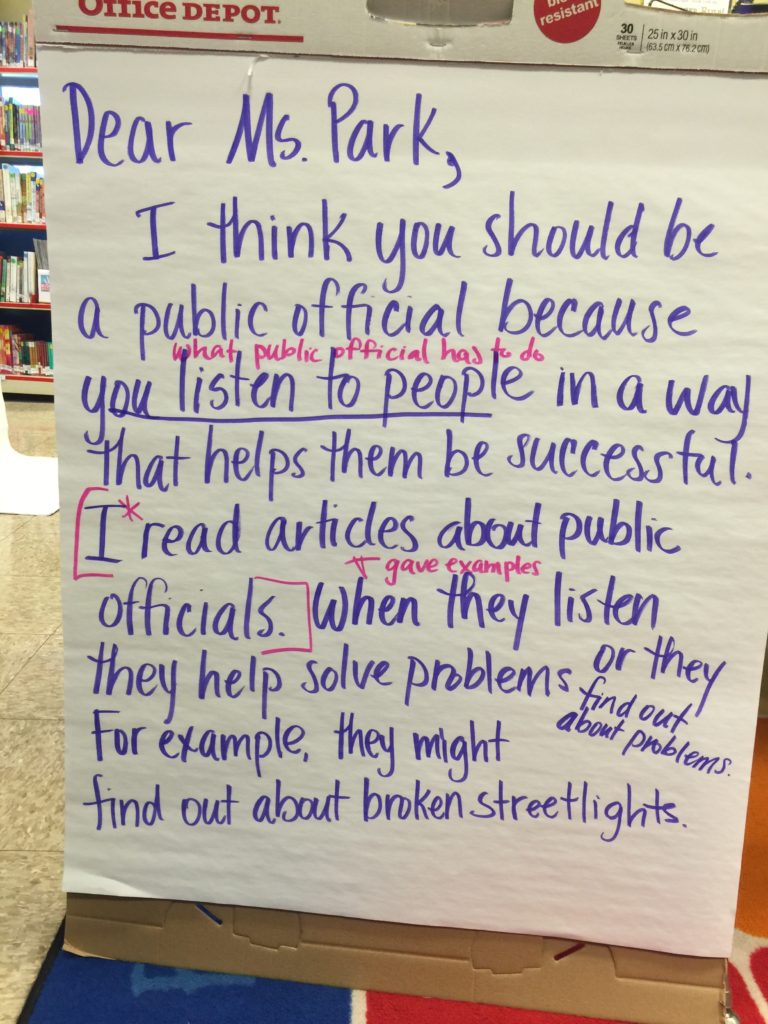
Below is an example of one students drafted letter – to his principal ;). Notice how the student integrated information from two texts into their letters.
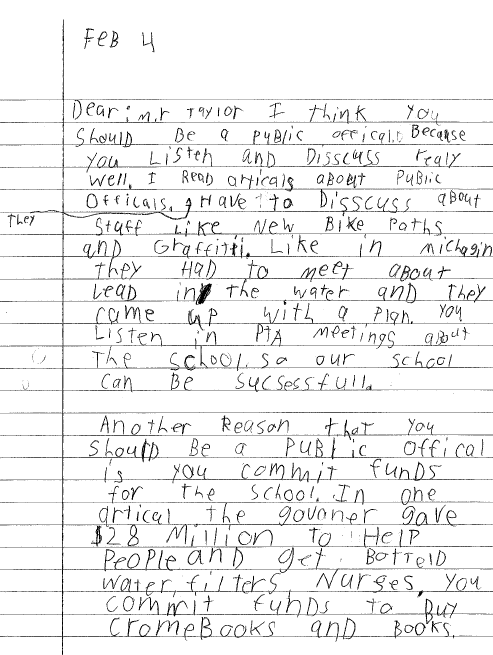
Different types of letters including notes of gratitude
One group of students read two texts – one about Jane Addams and one about Gus Garcia. The essential question was “How did these historical figures advocate for people?” When it came time to write, the author of this letter chose to write a thank you note to her teacher–thanking her for advocating for students and for teaching students to advocate for others – similar to Addams and Garcia.
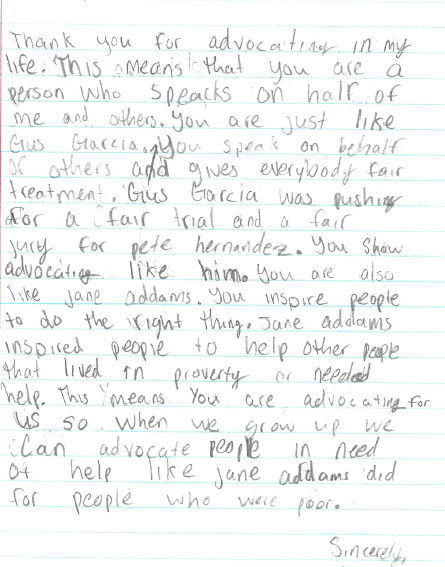
There are all sorts of letters students can write – thank you, encouragement, inquiry, requests, etc. One group read about how scientists collaborate and then they wrote a thank you note to a classmate who’d collaborated with them in some way (to build a bridge in science, to complete a math word problem, etc.). They had to include what they’d learned from two texts about the power of collaboration.
Hope this helps.
S
REVISED 4/20/21
